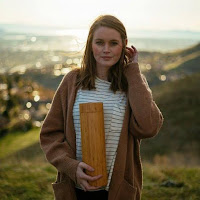With Covid striking terror in the hearts of many, and literally causing deaths due to fear as much as the ravages of the plague itself, thoughts naturally go to the final curtain of our lives, namely, DEATH.
For a Christian like me, Jesus has promised a life after death in the kingdom of His Father. Provided I follow the commandment of LOVE in my lifetime on earth.
So, I speculated on that final journey that I will take one day and how my family will bid farewell. Needless to say, the first thing that came to mind was how my body would be interred.
And so the title - SHROUD, COFFIN, URN.
SHROUD
A shroud is a cloth or long, loose piece of clothing that is used to wrap a dead body before it is buried.
Traditionally, mound shrouds are made of white cotton, wool or linen, though any material can be used so long as it is made of natural fibre.
In Europe in the Middle Ages, coarse linen shrouds were used to bury most poor without a coffin.
Orthodox Christians still use a burial shroud, usually decorated with a cross and the Trisagion.
The Early Christian Church also strongly encouraged the use of winding-sheets, except for monarchs and bishops. The rich were wrapped in cerecloths, which are fine fabrics soaked or painted in wax to hold the fabric close to the flesh.
Some Catholics also use the burial shroud particularly the Eastern Catholics and traditionalist Roman Catholics.
Muslims as well use burial shrouds that are made of white cotton or linen (Kafans). Burial is usually within 24 hours of death to protect the living from any sanitary issues.
COFFINS
Coffins are traditionally made with six sides plus the top (lid) and bottom, tapered around the shoulders, or rectangular with four sides. They are made of many materials, including steel, various types of wood, and other materials such as fiberglass or recycled kraft paper.
In Medieval Japan, round coffins were used, which resembled barrels in shape and were usually made by coopers. In the case of a death at sea, there have been instances where trunks have been pressed into use as coffins. Coffins usually have handles on the side so they will be easier to carry.
In Judaism, the coffin must be plain, made of wood and contain no metal parts or adornments. These coffins use wooden pegs instead of nails. All Jews are buried in the same plain cloth shroud from shoulder to knees, regardless of status in life, gender or age.
In China and Japan, coffins made from the scented, decay-resistant wood of cypress, sugi, thuja and incense-cedar are in high demand.
Certain Aboriginal Australian groups use intricately decorated tree-bark cylinders sewn with fibre and sealed with adhesive as coffins. The cylinder is packed with dried grasses.
In Taiwan, coffins made of crushed oyster shells were used in the 18th and 19th centuries.
There is nowadays an emerging interest in eco-friendly coffins made of purely natural materials such as bamboo, willow or banana leaf.
Custom coffins are occasionally created and some companies also make set ranges with non-traditional designs. These include printing or painting of peaceful tropical scenes, sea-shells, sunsets, cherubs and patriotic flags. Some manufacturers have designed them to look like gym carry bags, guitar cases, cigar humidors, and even yellow dumpster bins.
Other coffins are left deliberately blank so that friends and family can inscribe final wishes and thoughts upon them to the deceased.
A coffin may be buried in the ground directly, placed in a burial vault or cremated. Alternatively it may be entombed above ground in a mausoleum, a chapel, a church, or in a loculus within catacombs.
FUN FACT: FANTASY COFFINS.
Do read about this artistic way of burial at
https//en.m.wikipedia.org/wiki/Fantasy_coffin
 |
| A fantasy coffin. |
Funerary urns (also called cinerary urns and burial urns) have been used by many civilizations. After death, corpses are cremated, and the ashes are collected and put in an urn.
In the modern funeral industry, cremation urns of varying quality, elaborateness, and cost are offered, and urns are another source of potential profit for an industry concerned that a trend toward cremation might threaten profits from traditional burial ceremonies.
Biodegradable urns are sometimes used for both human burial. They are made from eco-friendly materials such as recycled or handmade paper, salt, cellulose or other natural products that are capable of decomposing back into natural elements, and sometimes include a seed intended to grow into a tree at the site of the burial.
Cremation or funeral urns are made from a variety of materials such as wood, nature stone, ceramic, glass, or steel.
I CHOOSE SHROUD.
WHAT ABOUT YOU?
FYI
When a coffin is used to transport a deceased person, it can also be called a pall, a term that also refers to the cloth used to cover the coffin while those who carry a casket are the pallbearers.






No comments:
Post a Comment